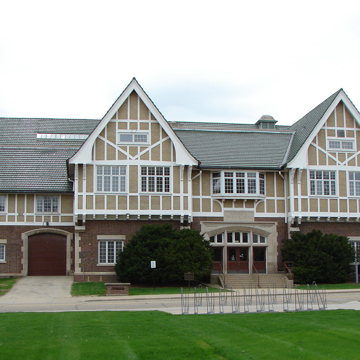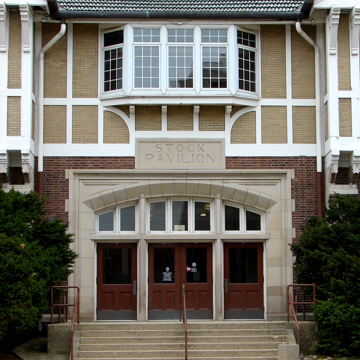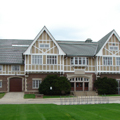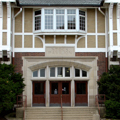Dubbed the “cowlesium” by a former university president, the Stock Pavilion was indeed built to accommodate livestock shows and in the pre-Internet era served as the student staging area for each semester’s course-registration process. It has also hosted performers ranging from Sergei Rachmaninoff to rock ‘n’ roll groups. Until 1930 it was the largest auditorium in Madison, and it offered good acoustics. Politicians, including presidents Theodore Roosevelt, William Howard Taft, and Harry Truman, also found a forum here. Philadelphia architects designed the Tudor Revival pavilion with yellow brick upper stories decorated with false half-timbering over a red brick first story to evoke a medieval house barn. Massive gables, three-and-a-half stories tall, dominate the facade and flank the wide Tudor-arched entrance.
You are here
Stock Pavilion
If SAH Archipedia has been useful to you, please consider supporting it.
SAH Archipedia tells the story of the United States through its buildings, landscapes, and cities. This freely available resource empowers the public with authoritative knowledge that deepens their understanding and appreciation of the built environment. But the Society of Architectural Historians, which created SAH Archipedia with University of Virginia Press, needs your support to maintain the high-caliber research, writing, photography, cartography, editing, design, and programming that make SAH Archipedia a trusted online resource available to all who value the history of place, heritage tourism, and learning.





